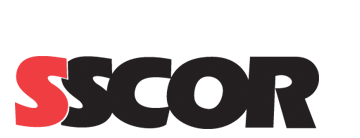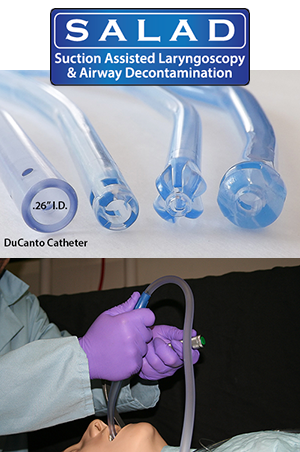What is the SALAD Technique?
The SALAD (Suction Assisted Laryngoscopy and Airway Decontamination) technique calls for constant suction provided by a catheter (in this case, the SSCOR DuCanto Catheter, developed by Dr. DuCanto and SSCOR, Inc.) in the upper airway, continuously removing vomit, blood and other materials, around which the practitioner intubates the patient via either direct or video laryngoscopy.
Click here to watch the video of Dr. DuCanto demonstrating the SALAD technique using the SSCOR DuCanto Catheter.
To receive a free sample click the banner below.
Who Developed this Technique?
The SALAD Technique was developed by Dr. James C. DuCanto. Dr. DuCanto is passionate about airway management and minimizing the risks of aspiration and its subsequent effects. He is an anesthesiologist with 20 years’ experience. Dr. DuCanto works at the Aurora St. Luke’s Medical Center in Milwaukee, Wisconsin where he serves as a staff anesthesiologist, Director of the Simulation Center, and director of the Anesthesiology rotation for students and residents.Click here for a pdf with more information on the SALAD Technique.
Why is the SALAD Technique important?
What a difference effective suctioning can make to the resuscitated patient. Effective suctioning clears the view for the care giver executing the intubation. It removes material that otherwise might enter the lower airway. Aspiration of foreign material can cause pneumonia slowing recovery or resulting in death.Pneumonia caused by aspiration or mechanical ventilation is probably the most important complication in comatose post-cardiac arrest patients, occurring in up to 50% of patients after out-of-hospital cardiac arrest. – “Post-cardiac arrest syndrome: Epidemiology, pathophysiology, treatment, and prognostication” – Jerry P. Nolan et al.
The SSCOR DuCanto Catheter is a great tool for the SALAD technique.








